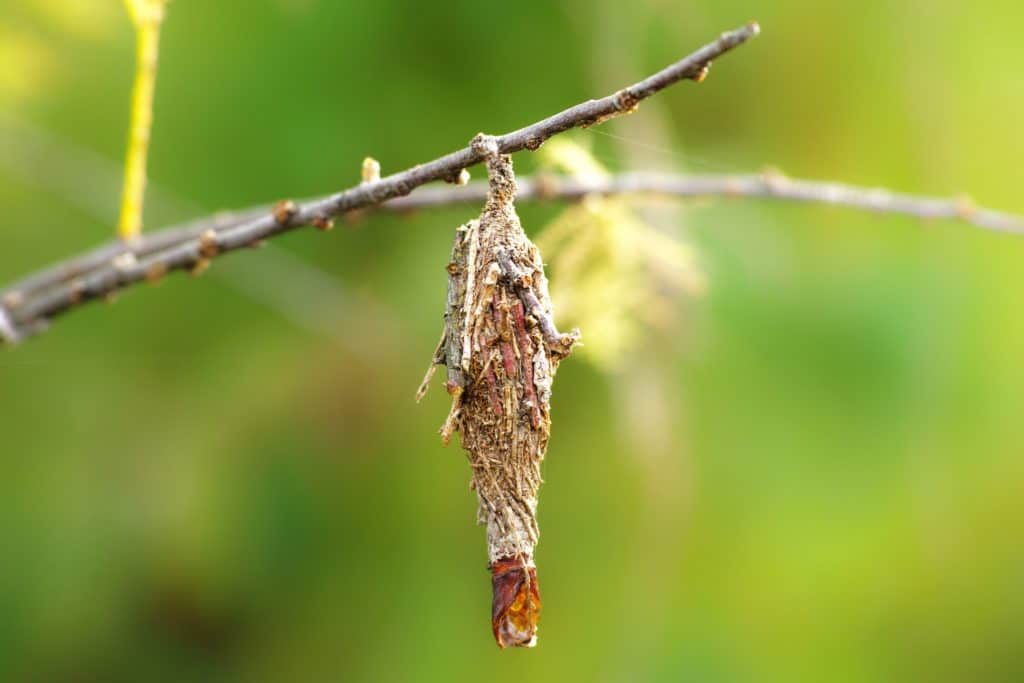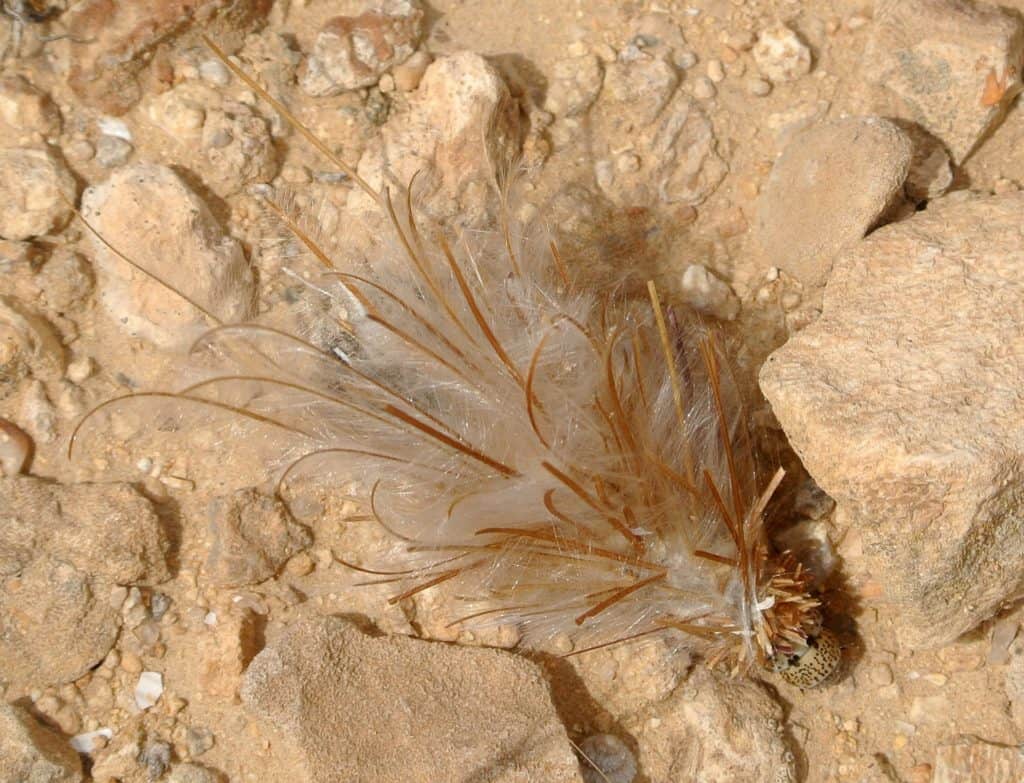If you live in Georgia or another southern state, you can count on the appearance of fire ant mounds in the year's late spring. To be such tiny little pests, ants can cause a lot of turmoil in home lawns, hayfields, and pastures. They are one of the most detested insects. Many people are stung […]

What are bagworms?
Bagworms are the Larval stage (caterpillar stage) of a moth rarely seen. Tent Caterpillars make spindle-shaped bags for shelter, which can become very unsightly and cause severe damage to ornamental plants and trees, leaving your lawn plant barren. Bagworms in Georgia go through the winter as eggs inside the bag; the eggs hatch in mid to late May and into early June. The tiny larvae crawl out of the end of the bag in search of food. They build a small bag around their hind parts using silk and plant material bits. This looks like a tiny upright ice cream cone. The larvae enlarge the bag as they continue to feed and grow. By early Fall, the bags reach their maximum size, 1 ½ to 2 inches. At this time, larvae permanently suspend their bags and transform into their resting state (pupa) before becoming an adult.
The adults merge from the pupal stage in early Fall. The males are black, furry moths with transparent wings and a one-inch wingspan. The males, being active flyers, go searching for females who remain inside their bags. Females are like grubs and do not have wings or legs. They are creamy-white and produce a scent that attracts the males. The males mate with the females by inserting their abdomen in the hole in the bottom of the bag. After the female has laid several hundred eggs, she drops them from the bag and dies.
Bagworm larvae injure plants when they feed on needles and leaves. Young caterpillars feed on host plants, sometimes leaving tiny holes in the foliage. More mature larvae are incredibly destructive to evergreen plants. Unfortunately, bagworm infestations generally go undetected until damage is complete, and the bags constructed by them are large and very conspicuous.

How to Identify Bagworm Infestation:
In Georgia, during the late Spring and summer months, you may see brownish sacks or tents on trees and shrubs. This is not good news, as this is a sign of infested plants. The bagworms will go directly to the susceptible plants you own and strip them down to their bare branches on host plants if not caught in time. The longer you let them go, the more bagworm damage will be done. They will start spreading from the infested plants to your common plants (even your favorite plant). The longer they go with a lack of a control strategy, the more difficult the infestation will be to get in control. So keep a lookout early on in the spring, winter, or early Spring before the eggs have hatched.
Georgia Bagworm Identification
Bagworms are most easily recognized by sack or bag the caterpillar forms and suspend from broadleaf plants and ornamental plants on which it feeds. The bags are made of silk and bits of susceptible plant material such as sap from plant tissues and plant detritus from around the host plant. This material helps strengthen the bag/case and serves as a disguise. This makes them more difficult to notice.
When the larvae are mature, the case may be 30 – 50 mm long, and the larvae hatching from the eggs are about two mm long. They are glossy black on the back and dull amber on the underside of their bodies. However, the mature larvae are a dirty gray and have darker markings toward the head.
The fully developed larvae are approximately 18 – 25 mm long. The adult female is worm-like and does not have eyes, wings, functional legs, or mouthparts. The female never leaves the bag. The adult male is a sooty-black color and moth-like. It has transparent wings.
Other Species of Insects With Similar Symptoms of Infestation Include:
Aphid Infestation: Aphids are common insects that secrete substances that can leave mold on plant material. The mold on plant material and the insect waste that they leave behind can also attract other unwanted pests.
Lace Bug Infestations: Lace bugs are pretty easy to identify. When you look on the bottom of your plant leaves and see dark and shiny spots with tiny black bugs and fly-like insects with lacy-looking wings, you have identified lace bugs. Lace bug damage is usually cosmetic and can be returned the following spring.
Scale Infestation: Scale Insects are hard to spot and are very small. Scale insects are soft-bodied insects that secrete a covering over their bodies designed to protect them from the environment.
Whitefly Infestations: Whiteflies resemble scale insects and attach themselves to the underside of leaves. Whiteflies are common insects, and the type damage they cause is by sucking the sap leaves and leaving toxic substances into the phloem and then spreading throughout the plant.
Keeping your plants and trees from infestation early is critical with these scale insects. Here are our recommendations for insect and bagworm control and management.
Bagworms in Georgia and Pest Control and Management:
Bagworms attack trees like ornamental trees, deciduous trees, and evergreens but are especially damaging to coniferous trees such as juniper, arborvitae, spruce, pine, and cedar trees. Bagworms are also attracted to susceptible landscape plants. Bagworms have become one of Georgia's most destructive pests of urban ornamental trees. Don't let light infestation become severe infestations, leading to heavy defoliation of host plants. This, of course, affects plant health and ultimately leads to plant death. It would be best to be diligent in going over your ornamental trees weekly, checking for light infestations. It is possible to get rid of bagworms, but it is not easy. The key is to start early, or it will make control difficult. The more diligent you are, the more likely you will keep your plants and trees from infestation.
Current Control Recommendations
It is essential to look closely for the small, upright bags that look like tiny ice cream cones constructed with bits of plant material. Young bagworms are much harder to see, but finding them as early as possible is helpful. If only a few small trees or shrubs are infested, you can pick the bags by hand and dispose of them. You can drown the bags in soapy water. Handpicking can be done in the Fall through early Spring, before the eggs hatch mid-May.
Parasitic ichneumonid wasps, such as Itoplectis conquisitor, also attack bagworms. Research had shown that bagworm parasitism rates increased when flowering plants surrounded infested shrubs.
Biorational insecticides, such as Bacillus thuringiensis, are effective control when targeted at the early larval stages of bagworms. This is an insect-killing bacterium that is nontoxic to humans or animals. You can use the microbial insecticide bacillus thuringiensi (Dipel) to spot treat the webs.
When hand-picking is not feasible or when the host is severely infested with bagworms, chemical control with an insecticide targeting young bagworm larvae is useful. It has been tested that the most effective pest control program is implemented by spraying them with an approved insecticide after eggs have hatched. In Georgia, the insecticide treatment can be applied to the infested plants and infested trees around June, when the larvae are still young and more vulnerable.
After mid-August, the insects are pupating inside their bags. It is too late to control these pests with conventional insecticides at that point. The bag protects its inhabitant securely, preventing insecticide penetration. The only solution at this point is hand removal and destruction.
Warning: Pesticides/Insecticides are poisonous. Please read and follow directions and safety precautions on labels. Handle carefully and store in original labeled containers out of reach of children, pets, and livestock. Dispose of empty containers right away, in a safe manner. Do not contaminate forage, streams, or ponds.
Leave it to the Pros
From proper plant selection when planning your lawn and garden to creating an effective program on landscape plants for pest control, Pride In Turf has you covered if you have any concerns or questions about pest control or are just curious about bagworms. In Georgia, contact your local Atlanta lawn care company today!
